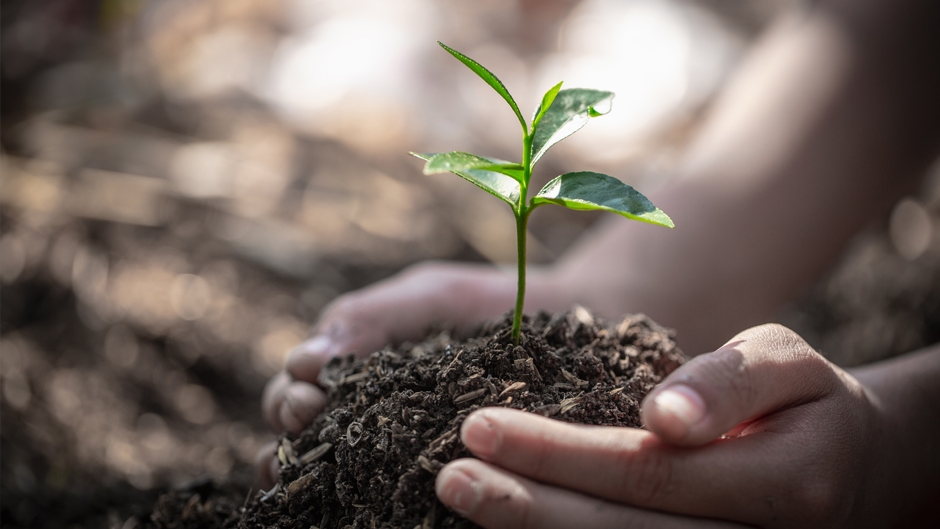In July, the city of Phoenix, Arizona, had 31 consecutive days at 110 degrees Fahrenheit. The city saw a brief respite on Tuesday, July 31, when the temperature dipped to 108 degrees.
Most of the Southern United States has been under a heat advisory for the past month as temperatures continue to rise.
Welcome to the sweltering summer of 2023.
For many, the punishing temperatures have brought home the reality that climate change is real and will continue to affect us for a long time.
As we wait for countries and governments to take steps to mitigate the effects of this environmental phenomenon, what can each of us as individuals do to lessen our carbon footprint?
Teddy Lhoutellier is the director of sustainability for the University of Miami and he heads Green U, an office that promotes sustainability throughout the University, while educating the community to be stewards of the environment.
“I love this planet, I love the region I live in, and I would like for my grandchildren to enjoy nature the same way,” he said. “The climate crisis is a direct threat to this vision, and taking action either as a citizen, as a consumer, a student, or a community member is a necessity. You hear a lot that the planet needs to be saved, but really what will be saved by living in a more sustainable way is the future of humankind.”
Members of the University community offer their advice on how we can help lessen the effects of climate change.
EAT A PLANT BASED DIET
Kenneth Feely, Smathers Chair of Tropical Tree Biology and director of the John C. Gifford Arboretum:
The quickest and most effective thing that we individuals can do to help reduce greenhouse gas emissions and combat climate change is to change our diets. More specifically, we can reduce meat consumption and eliminate beef consumption altogether.
Meat—and especially beef—production is an incredibly inefficient and “dirty” method for meeting our caloric and nutritional needs. Clearing land for cattle pastures accounts for more than 20 percent of all tropical deforestation worldwide. In the Amazon, more than 75 percent of cleared rainforest ends up as cattle pasture. Cattle and livestock are responsible for even more deforestation once one accounts for the fact that most of the areas cleared for agriculture are used to produce the grains—primarily soy —used to feed cattle. All told, livestock production accounts for almost 20 percent of greenhouse gas emissions [equivalent to all of transportation].
PLANT A TREE
Feely: Planting a tree can provide canopy protection from the heat, but it can also help in other ways. In Florida, it is best to plant native trees that can quickly grow to a large size to provide lots of shade and store lots of carbon. The tree species should also be tolerant of the high temperatures that we predict for Miami over the coming years. Based on these criteria, my top choice is West Indian Mahogany (scientific name is Swietenia mahagoni).
RECYCLE
Lhoutellier: Don’t use disposable plastic. Bring your own bottle, mug, or food containers. Much of the plastic that does not make it to the recycling plant ends up in our rivers and oceans. Not only is this a danger to the animals and plants whose habitats have become garbage patches, but it also poses a threat to the climate, because plastic releases greenhouse gases as it slowly breaks down. Visit the University’s sustainability website for more tips.
USE PUBLIC TRANSPORTATION, CARPOOL, OR BICYCLE
Lhoutellier: Lowering the amount of carbon dioxide that is emitted into the atmosphere is crucial to lower the carbon footprint. Gasoline and petroleum products, which are needed for the building and running of cars and other vehicles, are not environmentally friendly. Extracting them from the earth is an energy-intensive process that can damage local ecosystems. Shipping fuels can also consume a lot of energy.
REDUCE ENERGY CONSUMPTION
Lhoutellier: Use energy efficient appliances and bulbs, turn off lights when not in use, and consider using renewable energy sources like solar and wind power.
BUILD CONSCIOUSLY
Joanna Lombard, professor, School of Architecture: New construction and major renovation should adhere to green building standards—LEED or Living Building Challenge—which employ multiple strategies regarding building orientation and profile, construction methods, and materials to reduce energy consumption and carbon emissions.
More modestly modifying an existing building could start with lighter colors on exterior walls and roof tops to reflect rather than absorb the radiant heat from the intense Florida sun, and that reduces the heat load that the air-conditioning is fighting against to keep the house comfortable.
Limiting pavement and lawns in favor of trees and forest floor planting also reduces heat absorption, encourages biodiversity, and enhances groundwater recharge. In an apartment, it’s possible to mitigate heat intake with shades or blackout curtains. While west-facing windows require the greatest protection, in the Miami summer, shading east and south facing windows can make a difference.

